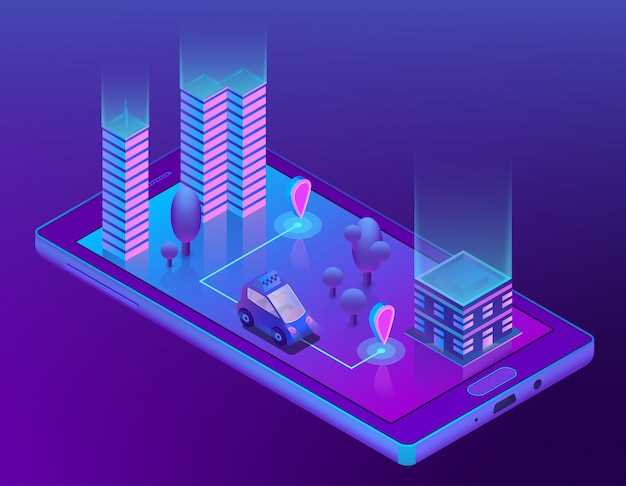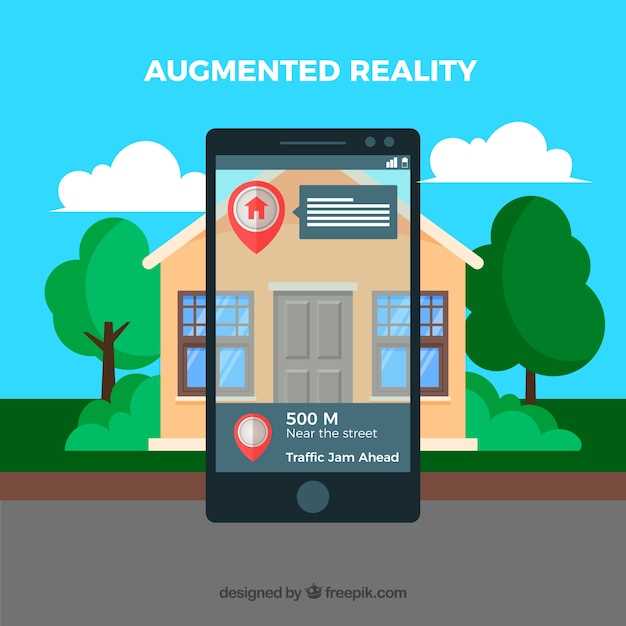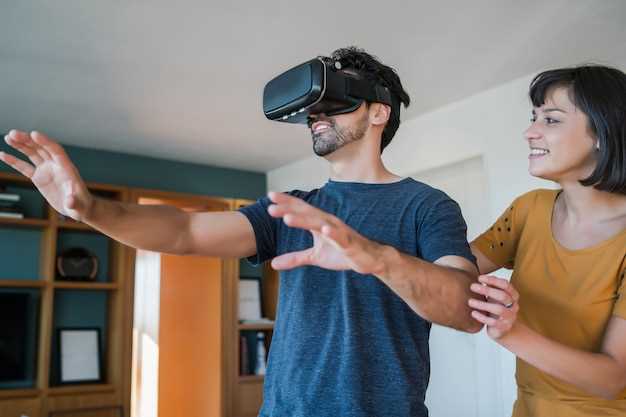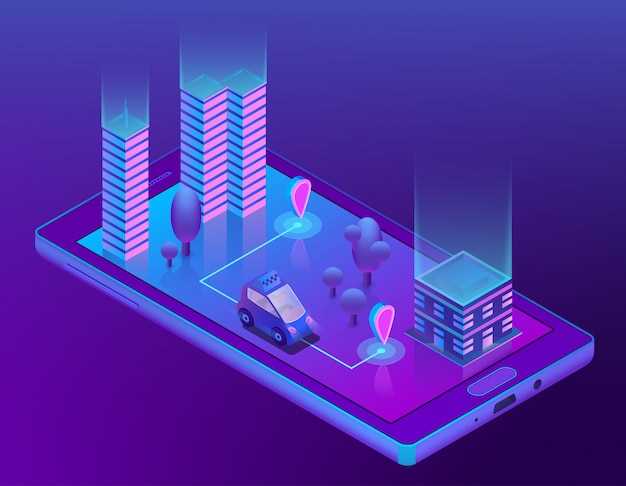
The landscape of design and property interaction is evolving rapidly. No longer confined to traditional methods, professionals are embracing cutting-edge techniques. This shift offers exciting possibilities for engagement. Clients now seek a more immersive experience. The future is here, blending imagination with functionality.
In today’s world, technology plays a pivotal role in reshaping perceptions. Digital solutions provide opportunities for deeper connections between creators and their audience. Imagine walking through a space that exists only in a digital realm, where every detail can be adjusted instantly. This revolutionary approach not only captivates but also informs, creating a valuable dialogue.
By leveraging these advancements, stakeholders can visualize projects before they materialize. Enhancing understanding fosters collaboration and clarity. Increased interactivity leads to more informed decisions. This method shifts the focus from mere visuals to meaningful interaction, enriching the entire process.
As professionals explore these new dimensions, they unlock a treasure trove of insights. Clients can now appreciate the nuances of design in real-time. This synergy not only bridges gaps but also nurtures trust. With this foundation, the entire experience becomes more enriching, dynamic, and tailored to individual needs.
Embracing this technological wave opens doors to uncharted territories. The line between the digital and physical continues to blur, allowing for limitless creativity. It’s an exciting time to engage with spaces in innovative ways, transforming how we build, perceive, and enjoy our environments.
Enhancing Architecture and Real Estate with Augmented Reality

The integration of innovative technologies offers a remarkable shift in the design and property sectors. Visual representation has evolved beyond traditional methods. Today, professionals can provide immersive experiences for potential buyers and clients. These advancements foster deeper connections and understanding. When people can interact with spaces virtually, their perceptions change dramatically.
This blend of digital overlays and physical environments creates an engaging atmosphere that captivates audiences. Traditional blueprints and static renderings often leave much to be desired. For instance, a three-dimensional virtual walkthrough allows clients to visualize a project from multiple angles before it becomes a reality. This not only enhances comprehension but also stimulates excitement and anticipation.
Moreover, utilizing such advanced methods encourages collaboration among stakeholders. Designers, clients, and builders can seamlessly discuss ideas and modifications in real time. When everyone is involved in the creative process, the outcomes frequently exceed expectations. Embracing these techniques bridges the gap between imagination and reality.
In addition, there are various applications of this technology tailored to specific needs. Whether showcasing residential developments or commercial spaces, engaging environments transform how clients interact with the possibilities. Users can easily navigate through proposed designs, altering aspects to see instantaneous results. This dynamic approach empowers individuals, giving them a sense of ownership in the design process.
Overall, the future of space conception is poised for radical transformation. The shift from conventional methods to interactive experiences signifies a critical advancement. As these tools become more accessible and widely accepted, the synergy between imagination and execution could inspire a new era of creativity. These improvements not only elevate the aesthetic appreciation of buildings but also enhance the decision-making journey for clients seeking their dream environments.
Innovative Visualization Techniques in Architecture

In the evolution of spatial design, freshness in visual representation is crucial. New methods facilitate clearer communication between creators and clients. Captivating visuals capture attention, making ideas accessible. Progress in tech gives rise to compelling presentations, transforming perspectives.
Traditional models and blueprints often fall short. They lack the dynamic quality needed to engage stakeholders fully. This has led to the rise of various advanced techniques.
- 3D Modeling: Offers detailed, three-dimensional views of projects.
- Virtual Reality: Immerses users into simulations for real-time interaction.
- Interactive Presentations: Engages audiences by allowing them to explore spaces.
- Drones: Capture aerial views that enhance site analysis.
- Digital Twins: Provide real-time data overlays onto physical locations.
By integrating these innovative methods, professionals can not only showcase their vision effectively but also engage potential clients with a more immersive experience, resulting in a deeper understanding of the project scope and functionality.
Another valuable tool is the use of animation. It breathes life into static designs. Moving visuals convey progression, making concepts more relatable. Whether it’s a walkthrough or a flyover, animations illustrate transformations effectively.
- Storyboard animations to outline the project journey.
- Use time-lapses to demonstrate change over time.
- Combine animations with narration for enhanced storytelling.
Ultimately, these visualization innovations serve to bridge gaps in communication, enabling seamless collaboration. Clients can now visualize outcomes with clarity, leading to informed decision-making and a shared vision of success.
The Rise of Augmented Reality Tools
The current landscape of technology is witnessing an unprecedented shift. Innovative tools have emerged, dramatically altering interactions across various sectors. They provide dynamic ways to engage, visualize, and experience concepts. Users are increasingly seeking solutions that blend the digital and physical worlds. This is where the potential of advanced visual technologies truly shines.
As businesses look for effective means to captivate their audience, these tools are becoming indispensable. They allow customers to envision projects before their realization. This adaptability fosters more profound connections between brands and consumers. Traditional methods no longer suffice. Instead, immersive experiences take center stage.
Consider the implications for showcasing properties. Clients can explore spaces from the comfort of their homes. This means saving time and resources. It also speaks to the desire for convenience in a fast-paced world. With every advancement, the boundaries of possibility expand.
| Tool Type | Use Case | Benefits |
|---|---|---|
| Interactive Models | Architectural Planning | Enhanced understanding of design proposals |
| Virtual Tours | Property Showings | Accessibility from any location |
| Mobile Applications | On-site Visualization | Immediate client feedback |
| Collaboration Platforms | Team Meetings | Streamlined project workflows |
The integration of these advanced tools is not merely a trend but a necessity for progress. As industries adapt, the capacity to visualize ideas in engaging ways grows. Companies embracing this innovation can create tailored experiences, which ultimately leads to increased satisfaction and loyalty. With evolving technology paving the way, the future looks incredibly promising.
Creating Immersive Experiences for Clients
The advancement of technology has opened new avenues for interaction. Clients today seek more than mere presentations or static visuals. They desire an encounter that immerses them in a conceptual vision. By utilizing innovative tools, one can forge captivating narratives that resonate deeply. This engagement goes beyond traditional methods; it redefines how individuals perceive spaces.
Immersive experiences spark curiosity and excitement. They invite users to explore environments in a dynamic way. Instead of looking at blueprints, clients can step into digital realms. They can visualize designs as if they were already built. Imagine walking through a virtual space, feeling the dimensions and atmosphere come alive.
With such environments, the barriers of imagination are shattered. Details can be seen up close, revealing textures, lighting, and layouts that static images simply cannot convey. The sense of scale becomes palpable, allowing clients to gauge the proportions of a room or the height of a ceiling effortlessly. This tangible sensation fosters trust, as clients feel more connected to the visions being crafted.
The incorporation of interactive elements further elevates these experiences. Choices can be made in real-time, adjusting colors or layouts at a moment’s notice. Such flexibility allows for a co-creative process, where clients and designers collaborate seamlessly, fine-tuning every aspect of the proposal together. This not only enhances satisfaction but also boosts the likelihood of a successful project outcome.
In conclusion, providing immersive encounters is about creating a dialogue. It’s about shifting perceptions and fostering deeper connections. When individuals feel engaged, they are more likely to advocate for ideas and solutions. The journey from concept to reality is not just visual; it is an emotional experience that can resonate long after the initial interaction. By prioritizing this approach, one not only enriches the client’s journey but also inspires innovative design and thought leadership within the industry.
Visualizing Concepts with 3D Models
Exploring ideas through three-dimensional representations offers a unique perspective. This approach enables individuals to perceive designs more vividly. By providing an interactive experience, users can connect emotionally with spaces. These models transform abstract concepts into tangible visuals, making comprehension easier.
3D visuals allow for a deeper understanding of spatial relationships. Users can manipulate angles and dimensions, fostering engagement. Colors, textures, and lighting bring designs to life, providing an immersive feel. This interactive aspect also encourages feedback and collaboration among stakeholders.
Moreover, utilizing digital models accelerates the decision-making process significantly. When clients interact with realistic simulations, they can visualize outcomes better. This clarity not only boosts confidence in choices but also ensures alignment between expectations and the final results.
Through advanced modeling techniques, architects can showcase various design iterations seamlessly. Real-time adjustments can be made while discussing ideas to refine the vision. Such flexibility promotes dynamic conversations, enabling creative solutions to emerge naturally. Engaging with a virtual environment helps to clarify ideas that may otherwise remain ambiguous.
What stands out with these visual tools is their ability to bridge gaps. They forge connections between technical language and everyday understanding. This synthesis empowers clients, making them active participants. As a result, relationships between professionals and users flourish, driven by shared insights and collaborative spirit.
Field Studies: Using AR for Real-World Feedback
Incorporating immersive technologies into construction and design is changing how feedback is gathered. Tools like augmented experiences allow stakeholders to interact with their surroundings in a new way. This interaction leads to insights that can significantly impact future developments. The fusion of digital content with the physical space fosters collaboration. Better communication is achieved through visualizing concepts before they become reality.
When real-world testing occurs, participants can engage deeply. Observations on usability and aesthetics bring forth valuable opinions. These insights often reveal unconsidered details.
- Observe user interactions with digital overlays.
- Gather immediate reactions to design elements.
- Adjust plans based on collective feedback.
This iterative loop between designing and receiving tangible perspectives is essential for tailoring environments that meet user needs. The combination of virtual and actual worlds allows for nuanced tweaks and alterations before completion, thereby ensuring that clients feel confident in the direction of their projects.
Feedback sessions using immersive methods can also facilitate a better understanding of functionality. On-site testing with virtual integrations enables a more profound grasp of spatial dynamics. This process can streamline discussions, keeping them relevant and focused on practical implications.
- Conduct immersive workshops with stakeholders.
- Utilize AR for collaborative brainstorming sessions.
- Implement feedback structures that adapt to user input.
The ability to visualize changes instantly not only fosters creativity but also supports informed decision-making. Engaging participants through interactive scenarios often sparks innovative ideas that conventional methods might overlook. In turn, this transforms the approach to project execution, making it more adaptive to evolving desires and challenges.
Engaging Clients through Virtual Real Estate Tours

In today’s competitive environment, innovative methods are crucial for captivating potential buyers. Engaging experiences can leave a lasting impression. A method gaining traction involves immersive tours that take clients inside properties. This approach allows clients to explore spaces from the comfort of their homes. Instead of simply browsing images, they can navigate through rooms, feeling the layout and ambiance.
Such tours transform the traditional experience. They provide a sense of presence that flat images simply cannot deliver. Users can interact with features, zoom in on details, and envisage themselves living in the space. For many, this feels more like an adventure than a routine viewing. By inviting clients to discover properties in a more personal way, agents create deeper emotional connections.
This technology not only saves time but also broadens the scope for outreach. Individuals who cannot visit in person can still experience each listing. An engaging tour captures their attention and builds interest. As they navigate through properties, their imagination is ignited, prompting thoughts of potential renovations or arrangements.
Ultimately, this approach shifts the focus from mere transactions to genuine experiences. It nurtures relationships and bolsters trust, vital components in the property market. As agents adopt these modern tools, the industry continuously transforms, paving the way for future innovations.
Benefits of Virtual Tours for Buyers
Virtual tours present an innovative way for potential homeowners to explore properties. They offer an immersive experience that can significantly influence purchasing decisions. Buyers can navigate spaces freely, absorbing every detail at their own pace. This approach caters to convenience, saving time and energy. Easy access to a variety of locations allows for informed choices.
For those unable to visit in person, these interactive experiences are invaluable. They break geographical barriers, allowing individuals from different locations to view properties without constraints. This flexibility opens doors to numerous opportunities, enhancing the overall search process.
- Convenience: Explore homes from anywhere, at any time.
- In-depth Insight: Gain a clearer understanding of layouts and spaces.
- Time-saving: Reduce the number of physical visits needed.
- Enhanced Engagement: Experience properties in a more captivating way.
Furthermore, the reduction in travel can lead to saving both time and costs, enabling potential buyers to focus more on what truly matters: finding the perfect home that meets their desires and needs.
Additionally, virtual tours allow for an impressive level of detail to be showcased. Buyers can examine finishes, furnishings, and outdoor spaces closely without distraction. This visibility can create stronger emotional connections to properties before people even set foot inside. Understanding the nuances of a home becomes simpler, letting buyers confidently make decisions.
- Ability to revisit properties multiple times without travel.
- Share tours easily with family or friends for opinions.
- Access to unique properties that might not have been considered otherwise.
In conclusion, the shift towards immersive virtual experiences presents significant advantages to buyers. From unparalleled accessibility to richer insights into properties, these tours are transforming how people view homes, ultimately revolutionizing their decision-making journey.
Seamless Navigation and Interaction Features
Incorporating intuitive navigation and interactive functionalities elevates the experience for users. The ability to move through a space effortlessly creates an immersive journey. Engaging with elements becomes more natural. Users can explore environments without feeling lost or overwhelmed.
Interactive features provide a sense of involvement. Instead of merely observing, individuals can directly engage with their surroundings. Whether adjusting elements or accessing information, these actions encourage curiosity. Users become explorers in a virtual realm, discovering aspects that resonate with their desires.
With a single gesture, a user can transition from one view to another while instantly displaying relevant information about features of interest. This fast-paced interaction fosters a dynamic atmosphere, keeping users captivated and interested in what lies ahead.
As users navigate through environments, they can manipulate objects, altering designs to fit personal preferences. This level of engagement transforms passive viewing into an active dialogue with the space. Choices made by users inform potential outcomes, making every interaction meaningful.
The combination of effortless movement and rich interactivity ensures that users feel in control. This fluidity in navigation helps maintain focus, preventing distractions. Visitors can maintain their interest without the typical barriers found in traditional exploration.
Incorporating these advanced features not only builds excitement but also enhances understanding of the spaces being encountered. By allowing users to immerse themselves, it nurtures a deeper connection to the environment while paving the way for innovative experiences that are both memorable and effective.
Case Studies of Successful Implementations
This section explores various examples where innovative technology has reshaped perceptions and interactions in design and property sectors. These instances illuminate how advanced tools can create immersive experiences, allowing users to visualize concepts that once existed only on paper. They emphasize the shift in communication between professionals and clients. By weaving together technology and creativity, remarkable outcomes are achievable.
Consider the project by XYZ Studios. They integrated immersive tech into their design workflow. The result was a spectacular virtual tour for potential buyers. Instead of relying solely on brochures or traditional presentations, clients explored spaces interactively.
Similarly, ABC Developers adopted cutting-edge solutions for apartment showcases. In this case, they utilized mobile applications. The outcome was enhanced engagement, as prospects could rely on their devices to visualize layouts and make decisions effortlessly. Such approaches not only improved understanding but also sped up the sales process.
| Project Name | Implementation Details | Outcome |
|---|---|---|
| XYZ Studios | Immersive virtual tours for project presentations | Increased client engagement and understanding of designs |
| ABC Developers | Mobile app for interactive apartment layouts | Streamlined decision-making process for potential buyers |
These cases illustrate a broader trend, where tools not only aid in showcasing but also foster stronger connections between stakeholders. The integration of such technology can ultimately lead to increased satisfaction on all sides, yielding better results for creators and consumers alike.
Video:
DOF VR : AR for Real Estate & Architecture
DOF VR : AR for Real Estate & Architecture by Depth of Field 93,717 views 3 years ago 2 minutes, 22 seconds
Q&A:
How does augmented reality (AR) enhance architectural design presentations?
Augmented reality enhances architectural design presentations by allowing architects to superimpose digital models over real-world environments. This technology enables clients to visualize the proposed structures in their actual context, making it easier to understand scale, proportions, and overall aesthetics. Clients can walk around a site and see how a building will look from different angles, facilitating more informed decision-making and feedback.
What specific benefits does AR provide to real estate professionals?
AR offers several benefits to real estate professionals. Firstly, it improves marketing efforts by providing potential buyers with immersive property tours without the need for physical visits. Secondly, AR can help in staging homes virtually, allowing buyers to visualize the space with different furniture and decor. Finally, AR tools can streamline communication between agents and clients, providing instant access to property information and enhancements in client engagement through interactive presentations.
In what ways can clients interact with AR during the design process?
Clients can interact with augmented reality in various ways during the design process. They can use AR applications on mobile devices or AR headsets to view 3D models in real-world environments. By manipulating the viewpoint, clients can explore different interior layouts, finishes, and fixtures. Additionally, clients can provide real-time feedback directly within the AR application, making the design process more collaborative and responsive to their needs and preferences.
Are there any challenges or limitations when implementing AR in architecture and real estate?
While AR presents many advantages, there are challenges associated with its implementation. Technical limitations, such as the need for high-quality rendering and reliable hardware, can hinder the experience. Additionally, there may be a learning curve for both architects and clients unfamiliar with the technology. Budget constraints can also be a factor, as investing in AR tools and training can require significant resources. It’s essential for firms to weigh these challenges against the potential benefits to create effective AR solutions.
How is client engagement improved through the use of augmented reality in real estate?
Client engagement is significantly improved through augmented reality by creating a more interactive and immersive experience. Traditional static presentations often fail to capture a client’s interest, whereas AR allows clients to be active participants in the design and decision-making processes. This interactivity fosters a stronger emotional connection to the project, as clients can envision themselves in the space and make more informed choices. Furthermore, the ability to visualize changes in real-time enhances communication between clients and professionals, leading to a more collaborative and satisfying experience.
How does augmented reality (AR) improve client engagement in architecture and real estate?
Augmented reality (AR) significantly enhances client engagement by providing immersive and interactive experiences that traditional methods cannot match. With AR, clients can visualize architectural designs and real estate projects in real time and in their actual environment. They can walk through virtual spaces, interact with elements, and even customize features according to their preferences. This not only fosters a deeper understanding of the project but also encourages meaningful discussions between clients and architects or real estate agents. By bridging the gap between vision and reality, AR tools make it easier for clients to feel connected to the design process, leading to increased satisfaction and confidence in their decisions. Moreover, AR can help in presenting complex information in a more digestible format, enabling clients to grasp nuances of design and spatial relationships, which further enhances their overall engagement.